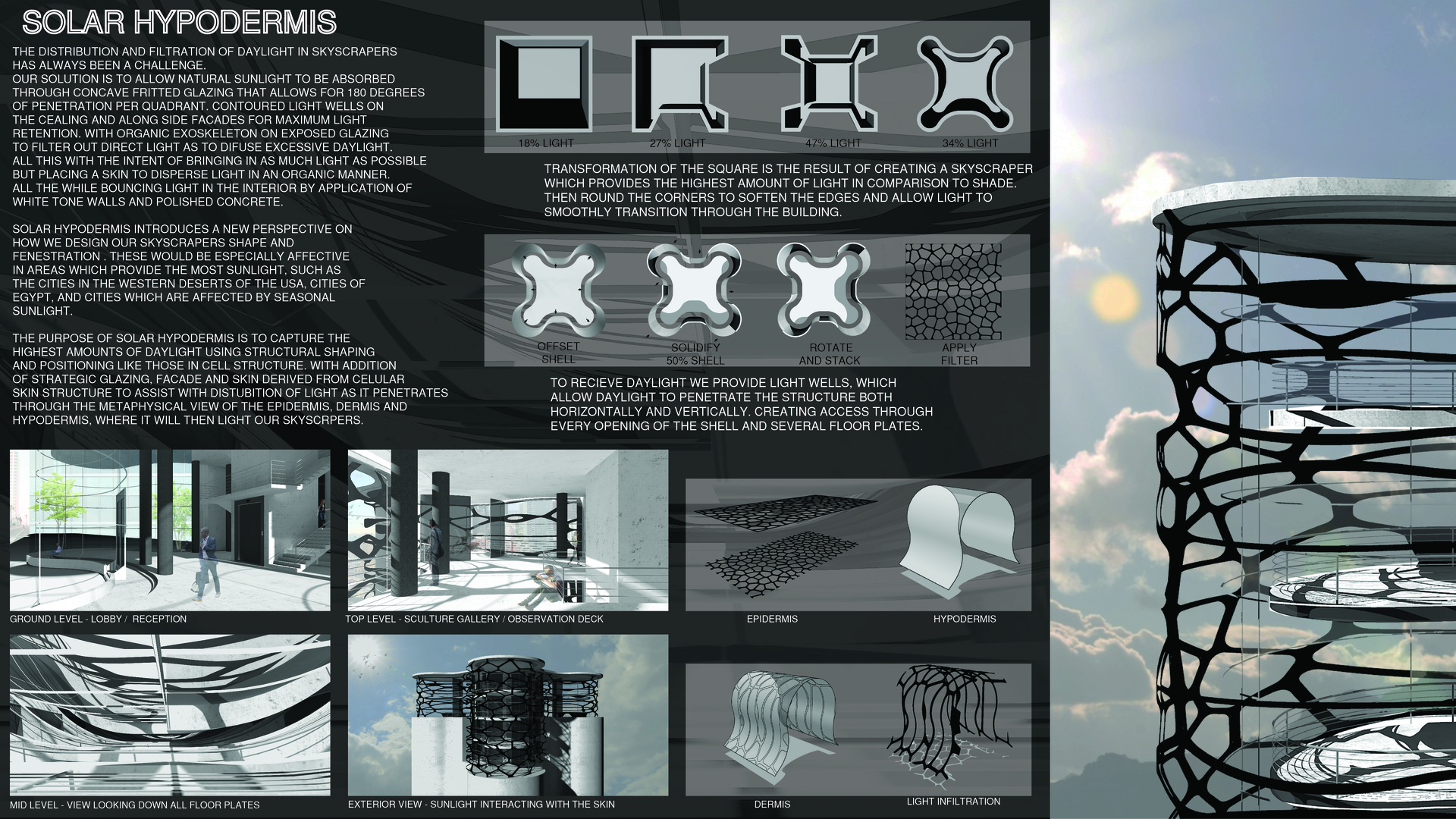Project Description
The distribution and filtration of daylight in skyscrapers has always been a challenge. Our solution is to allow natural sunlight to be absorbed through concave fritted glazing that allows for 180 degrees of penetration per quadrant. Contoured light wells on the ceiling and along the side façades for maximum light retention. With an organic exoskeleton on exposed glazing to filter out direct light as to diffuse excessive daylight. All this with the intent of bringing in as much light as possible but placing a skin to disperse light in an organic manner. All the while bouncing light in the interior by application of white tone walls and polished concrete. Solar Hypodermis introduces a new perspective on how we design our skyscrapers shape and fenestration. These would be especially affective in areas which provide the most sunlight. Such as the cities in the western deserts of the USA, cities of Egypt, and cities which are affected by seasonal sunlight. The purpose of solar Hypodermis to capture the highest amounts of daylight using structural shaping and position like those in cell structure, with addition of strategic glazing, façade and skin derived from cellular skin structure to assist with the distribution of light as it penetrates through the metaphysical view of the epidermis, dermis and hypodermis, where it will then light our skyscrapers.
